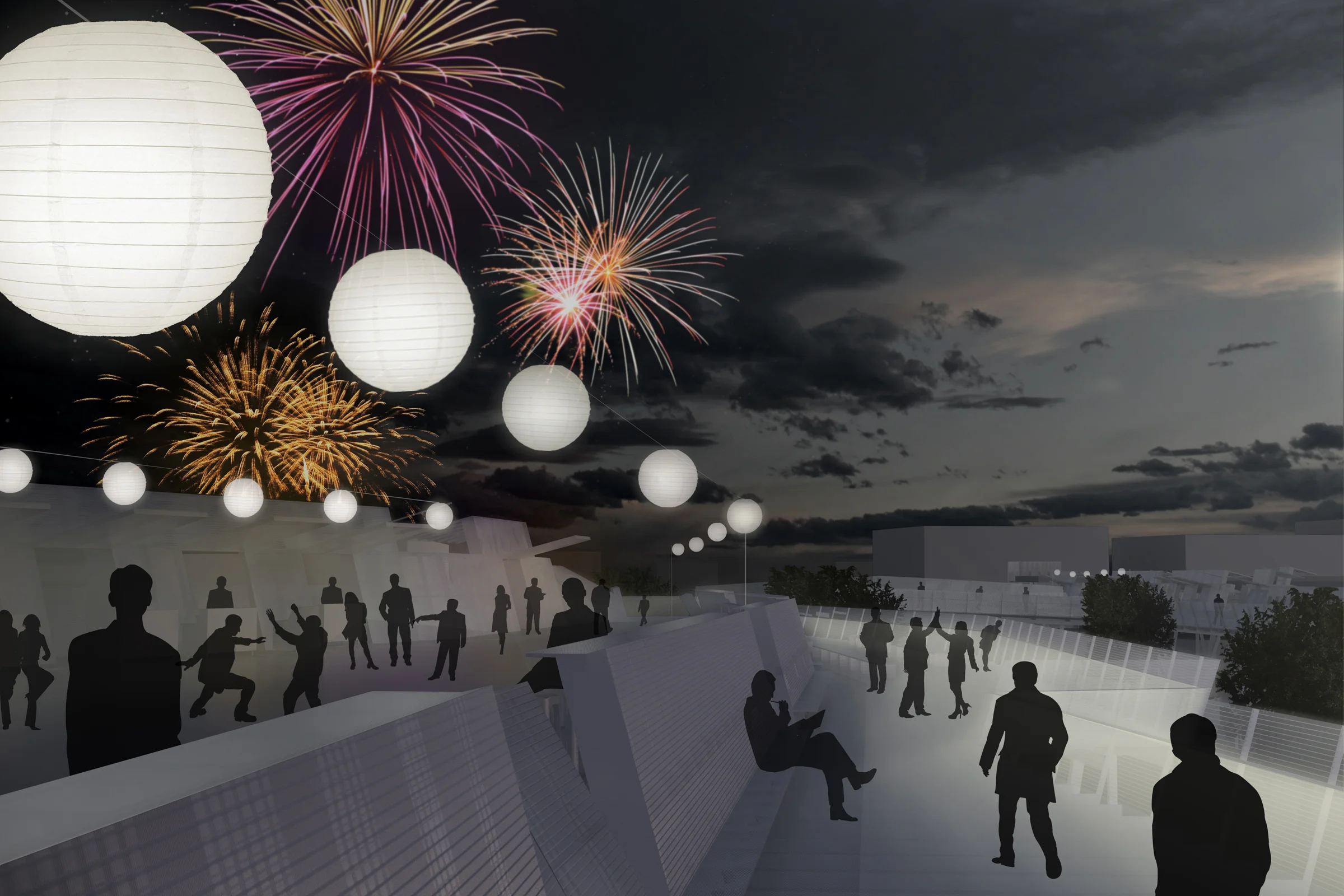blurring the gap
manufactured landscapes_511 options studio_spring 2013
studio critic: Patty Heyda, Assistant Professor at the Sam Fox School of Design and Visual Arts
program: pedestrian infrastructure for the Shenzhen Foxconn campus
location: Shenzhen, China
Manufactured Landscapes, named after the documentary on photographer Edward Burtynsky. Burtynsky photographs industrial sites and landscapes around the world. After briefly researching the history of company towns in America, we began mapping and diagramming the production of the iPhone which is assembled by Foxconn, a massive multinational corporation based in Taipei that produces roughly 40% of the world’s consumer electronics including products for Nintendo, Amazon, Nokia, and Sony. The Foxconn complex in Shenzhen, China is a small city, employing 300,000 people. A large percentage of workers live on campus, eat in Foxconn cafeterias and sleep in Foxconn dorms.
History of Foxconn and Apple, Media and Chinese policy timeline done in collaboration with Xinrui Zhong
Following a string of worker suicides in 2010, Foxconn became the face of manufacturing in China, largely due to the growth and success of Apple. News reports of low wages, long hours and cramped living conditions shocked consumers around the world and tarnished Apple’s image as an innovative and ethical industry leader. Although the onslaught of media attention led to higher wages and other reforms, many industry experts and advocates believe that Apple and Foxconn could do more.
After compiling our research in book form, we individually identified areas ripe for a design intervention. In defining my program, I looked at the spatial conditions of the workers and diagrammed the existing economic relationships between Foxconn, its workers, Shenzhen and the Chinese government. The large scale of Foxconn’s secure production facilities offer great value and flexibility to its clients but provide few benefits to its workers and their quality of life.
program matrix and typology diagram
With my intervention, I proposed an alternative to the closed economic loop between Foxconn and its workers by introducing the informal economy found around the edges of Foxconn and in surrounding traditional neighborhoods. Temporary vendors set up stalls and displays near the Foxconn gates, catering to thousands of workers. I wanted to blur the edge between Foxconn and Shenzhen, informal and formal, private and public.
My site is the main south gate which shares the most active edge with the city. Currently a pedestrian bridge provides safe access for workers across the six lane highway that borders the south end of the Foxconn campus. I proposed extending a pedestrian infrastructure into the campus itself, creating a public street above and spaces for workers below. A new gate would regulate vehicular access below. Workers enter and exit through key card turnstiles, a system Foxconn currently uses at many of its street level gates. In keeping with the company’s desire for simplicity and efficiency, I developed a series of modular typologies, a kit of parts.
The main idea is a thickened edge/tilted-wall that restricts direct views into the activities of the campus while supporting a diverse array of programmatic functions. One of the key components is the market stall. The lower panel of the wall flips up providing a covered entrance when in use and secure storage for the cart when closed. The tilted-wall transforms to become a bench, an internet portal, a bar counter, and a media wall. Below, columns support covered lockers spaces for Foxconn workers. A new permeable paving strategy redefines pedestrian access at ground level. Social and solitary spaces coexist along the new street, accommodating different activities from day to night.
lower street level
upper street level
paving strategy and section
study models (click to slide)
site axon (click to enlarge)




renderings








